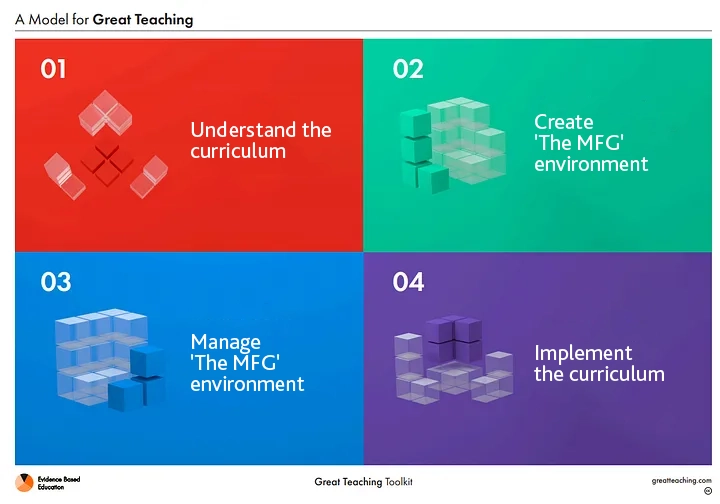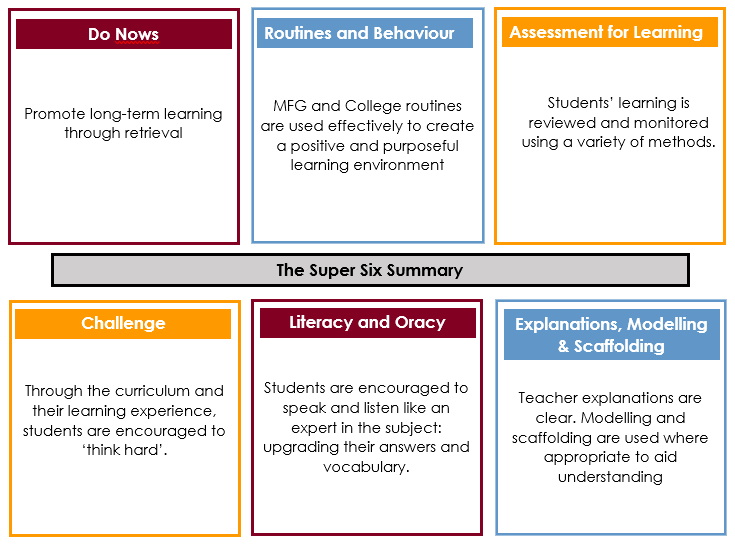Curriculum
Home > Curriculum Implementation
Curriculum Implementation
Quality First Teaching
The curriculum is coherently planned and sequenced across all year groups, subjects and lessons, and is delivered within a supportive, articulate, metacognitive-thinking school culture, allowing all learners to develop the knowledge, skills and cultural capital needed to succeed in life, preparing them for future learning and employment.
The principles for high quality teaching are the essential connections to ensure the Curriculum Intent is met and these principles are research driven (Great Teaching Toolkit Evidence Review, June 2020).
The following 4 points are crucial for staff to follow to meet the above intent: (Based on Evidence Based Education, Great Teaching Toolkit Evidence Review, June 2020):
- Understand the content they are teaching and how it is learnt (Curriculum)
- Create a supportive environment for learning (Relationships and Metacognition)
- Manage the classroom to maximise the opportunity to learn (Behaviour for Learning)
- Present content, activities and interactions that activate their students’ thinking (Teaching and Learning)

We expect all lessons to follow these 4 principles. School priorities, Performance Management, Quality Assurance and Staff Training are all linked to these principles and these drive our school improvement.
Super 6
At the MFG, we have a shared understanding of what quality first teaching looks like in the classroom. We have divided these into 6 areas, which we call The Super 6. The school’s Teaching and Learning Super 6 Teaching & Learning Model underpins all our Quality First Lessons. Curriculum documents and lessons are planned with this research informed model. Continuing Professional Department (CPD) is centered on sharing good practice around these six areas. Quality assurance of lessons is carried out, with CPD needs in mind. Teachers continually seek to further improve, and we strive to make CPD bespoke.

Home Learning
Home learning is set across all Key Stages. It is used in different ways, depending on the Key Stage, subject, and learner. For example, homework may be:
- Application of learning from the lesson or further practice of content from the lesson
- Research – for example, researching a designer for Textiles.
- Flipped learning – where students complete pre-learning before the lesson, giving a higher starting point for all students when the lesson starts.
In Key Stage 3 and 4, homework is recorded by the student in their planner. At Key Stage 5, Microsoft Teams is used in place of a planner.